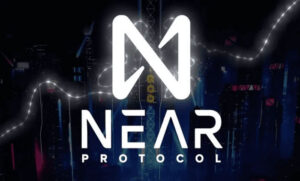
Close



In the vast landscape of digital currencies, innovation is constant and new projects and platforms are constantly emerging. Meanwhile, the NEAR protocol has attracted considerable attention and offers a scalable and developer-friendly blockchain infrastructure for decentralized applications (dApps). At the core of the NEAR protocol is its native digital currency, NEAR. This article aims to provide a comprehensive exploration of the NEAR cryptocurrency, examining the origins, features, uses, and broader ecosystem of the NEAR protocol.
The NEAR protocol was designed with the vision of creating a more accessible and user-friendly blockchain ecosystem. Founded by a team of experienced developers and blockchain enthusiasts, the NEAR protocol aims to address some of the key challenges facing existing blockchain networks, such as scalability, usability, and developer experience. Using innovative technologies and design principles, the NEAR protocol seeks to empower developers to build scalable, secure, and decentralized applications that can reach the mainstream.
The NEAR protocol consists of several main components that collectively enable its functionality:
Blockchain infrastructure: At its core, the NEAR protocol is a blockchain infrastructure designed to support decentralized applications. Built on a sharded architecture, the NEAR protocol is capable of processing thousands of transactions per second, making it highly scalable and efficient.
Developer tools: The NEAR protocol provides a comprehensive set of developer tools and resources, including software development kits (SDKs), libraries, and documentation. This tool aims to simplify the process of building and deploying decentralized applications on the NEAR platform, thereby lowering the barrier to entry for developers.
User experience: The main focus of the NEAR protocol is to improve the user experience of interacting with blockchain applications. The NEAR protocol aims to make blockchain technology more accessible and user-friendly for mainstream users through intuitive interfaces, seamless installation processes, and strong security features.

NEAR is the native digital currency of the NEAR protocol ecosystem, which acts as the main medium of exchange and transfer of value in the network. NEAR tokens were initially distributed through a token sale event, during which participants could acquire tokens in exchange for cryptocurrency or fiat currency. Subsequently, NEAR tokens can be traded on various cryptocurrency exchanges, allowing users to freely buy, sell and transfer them.
NEAR tokens play an important role in the NEAR protocol ecosystem and provide a wide range of tools and functionality:
Transaction fees: Users must pay a small amount of NEAR tokens as a fee to process transactions on the NEAR network. These fees help incentivize lenders to secure the network and ensure the integrity of transactions.
Staking: NEAR holders can share their tokens to participate in the network’s consensus mechanism and receive rewards in return. By staking their tokens, users contribute to the security and decentralization of the NEAR network while also earning passive income.
Governance: NEAR tokens also give holders the right to participate in the governance of the NEAR protocol ecosystem. NEAR holders can propose and vote on protocol upgrades, parameter changes, and other governance decisions through on-chain voting mechanisms.
One of the key strengths of NEAR is its interoperability with other blockchain networks and protocols. The NEAR protocol is designed to be compatible with existing blockchain standards and allow for seamless integration with external platforms and assets. This interoperability enables NEAR tokens to be used in conjunction with other cryptocurrencies, decentralized exchanges (DEX) and decentralized financial protocols, further expanding their utility and liquidity.
While the NEAR protocol offers significant scalability and performance, achieving widespread adoption remains a challenge. As with any emerging technology, overcoming network effects, attracting developers, and leveraging internal users are important factors that will determine the long-term success of the NEAR protocol and NEAR tokens. Continued efforts to improve scalability, usability, and developer experience will be necessary to drive adoption and realize the full potential of the NEAR ecosystem.
Ensuring the security and decentralization of the NEAR protocol network is critical to its success. As the ecosystem grows and evolves, maintaining strong security mechanisms and effective governance processes will be critical to mitigate risks and protect against potential vulnerabilities. Active community participation, transparent governance structures, and ongoing research and development efforts help strengthen the resilience and sustainability of the NEAR protocol ecosystem.